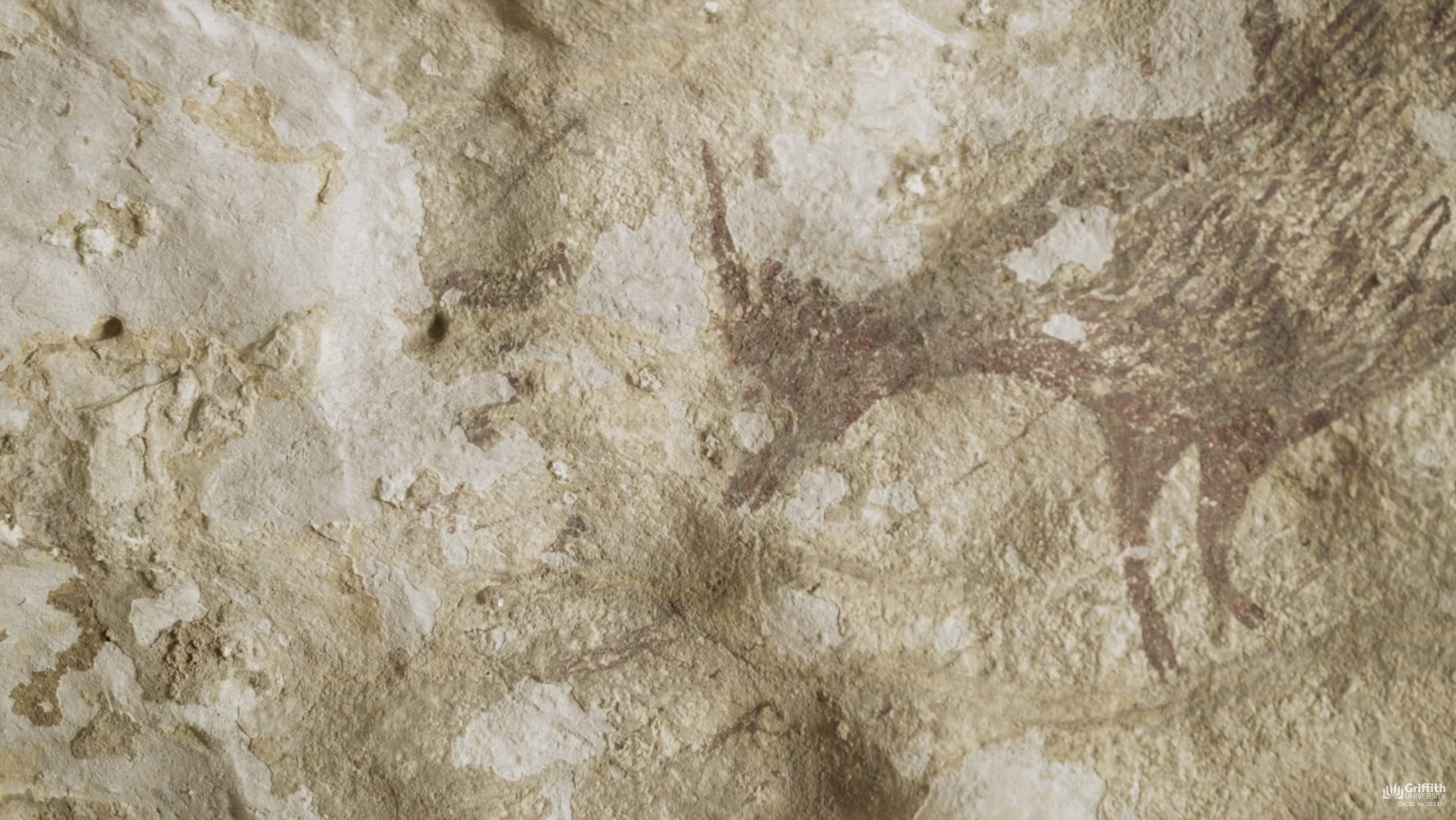Indonesia may be the home of the oldest cave paintings of hunting bands found in the world.

Image credits Griffith University via Gizmodo.
A new study reports on what appears to be a depiction of human-like figures hunting wild buffalo and pigs at the Leang Bulu’ Sipong 4 site in South Sulawesi, Indonesia. It was dated to be approximately 43,900-years old. If this estimate is true, it would make the artwork the oldest known example of figurative art drawn by modern humans.
For now, exactly what the scene is meant to represent is still up for debate, but it could also be the oldest depiction of a hunting scene to date.
Hunting or myth-telling
Cave art that precedes this one has been discovered both in Europe and Africa. However, the cave drawings in Europe, featuring animals, dots, geometric signs, and hand stencils, were almost certainly made by Neanderthals. The art-piece from Africa, a 73,000-year-old cross-hatched pattern drawn onto a smooth rock, is not a figurative work (i.e. not meant to represent a real scene or place).
The oldest known hunting scenes that we know were made by modern humans date back between 21,000 to 14,000 years ago and were found in Europe — including the famous drawing at The Shaft in Lascaux France. The new scene found in Sulawesi shows that the tradition of figurative cave paintings wasn’t necessarily born in Europe.
Due to the ravages of time, the 4-meter (13 ft) wide artwork isn’t fully visible. However, it seems to have been a single composition depicting tiny humans with spears and ropes hunting buffalo and pigs.
The oldest known hunting scenes that were made by modern humans date back somewhere between 21,000 and 14,000 years ago and were found in Europe — including the famous drawing at The Shaft in Lascaux France. The new scene found in Sulawesi shows that the tradition of figurative cave paintings wasn’t necessarily born in Europe.
The team was able to date the drawings using calcium carbonate growths that form naturally in limestone caves — the same growths that now obscure parts of the artwork. The tests returned an age of 43,900 years ago but, as these bits of mineral grew over the paints, the drawing itself could be much older.
Both modern and several kinds of archaic humans — including Homo erectus and the Denisovans — lived in the area at this time. While any one of them could have created the work, we know for a fact that modern humans would paint similar (and unrelated) scenes at later dates all over the world, making them the most likely candidate.
Ochre, hematite, and other natural pigments were used to paint the figures, the team explains. It showcases several therianthropes hunting or subduing six animals: two Sulawesi warty pigs and four dwarf buffaloes known as anoas, both of which were common to Sulawesi at the time.
“Although these animals were depicted in outline profile with irregular patterns of infill the figures were executed with a relatively high degree of anatomical realism and certain [anatomical features] of these species are clearly represented, such as, in the case of Sulawesi warty pig, its distinctive head crest, and, with the anoas, their characteristic straight, dagger-like horns,” corresponding author Adam Brumm told Gizmodo.
He adds that “we can’t ever know the real meanings of this cave painting,” the team is “fairly convinced” that it showcases a hunting scene; it could also be a depiction of myth or religious story due to the presence of the therianthropes.
The paper “Earliest hunting scene in prehistoric art” has been published in the journal Nature.









